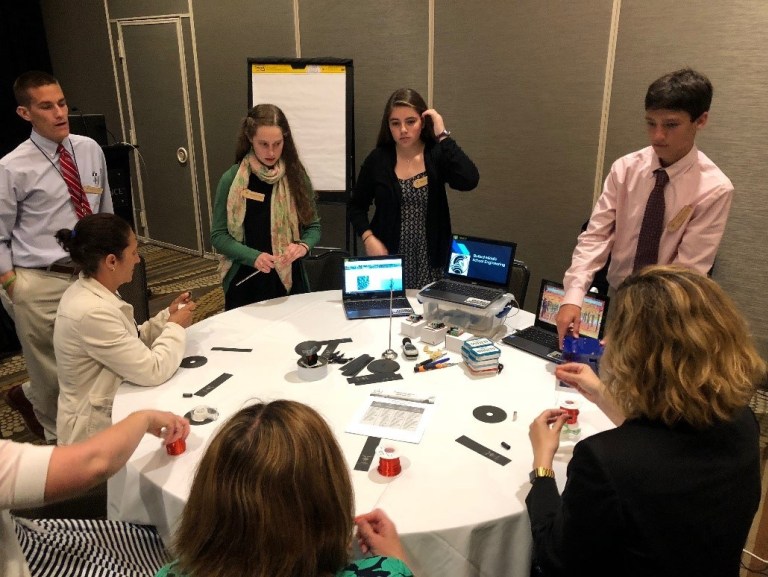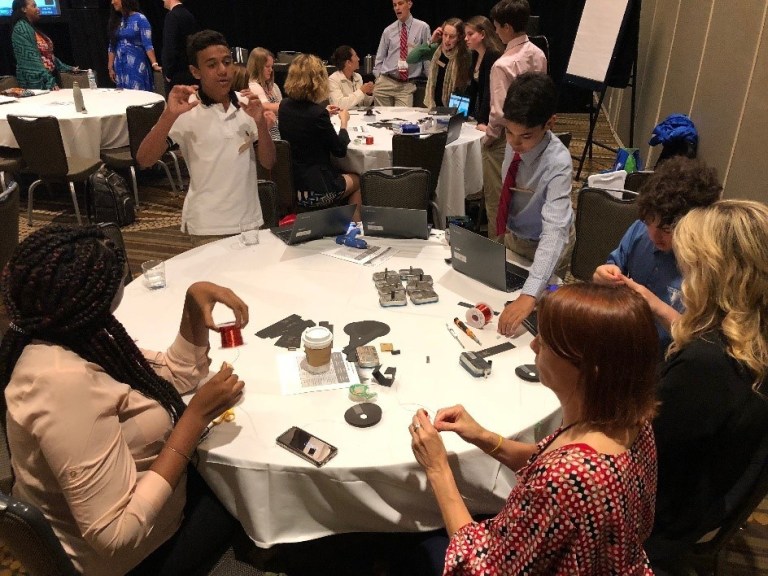Ideas in Action: Turn Up the Innovation: i3 Grantees Tackle STEM Through Hands-On Experience
Tuesday, June 26, 2018 | Nora Kern
Key Takeaway: Hands-on experiences and innovative instruction, like that supported by the Investing in Innovation (i3) Grantees, can provide challenges that inspire students to consider careers in science and engineering.
Location: Charlottesville, VA
Grades Served: 7-8
Student Enrollment: 509
Demographics: Students of color, 51%; Eligible for free- or reduced-priced lunch: 55%
It’s amazing what you can do with a little construction paper, copper wire, a magnet, and an amplifier—especially when you’re under the direction of students from Buford Middle School in Charlottesville, Virginia, a recipient of an Investing in Innovation (i3) grant.
Safal Partners was proud to facilitate the Investing in Innovation (i3) Project Directors’ Meeting on behalf of the U.S. Department of Education this month. For the first time, this meeting featured a session led by students that are involved in i3 projects in New Jersey, New York, and Virginia.
Students from Buford Middle School, which is part of Charlottesville City Schools, led educators through a sample STEM project to construct a speaker out of items most of us wouldn’t know what to do with otherwise. As the adult participants worked to assemble a functional speaker, students explained how this hands-on project taught them about engineering while encouraging them to take risks and experiment.
The real power of hands-on STEM programs, like the one at Buford, is its ability to inspire students to think about college and career in new ways. Many of the student presenters revealed they were interested in studying engineering in college because of the lessons and experiences they’ve had through the Invention Kits project.

Photo credit: Carlie Porterfield/Community Impact Newspaper
The speaker construction project is a part of the Smithsonian Invention Kits, a series of curricula that is being collaboratively developed through an i3 grant. For each project, students are given the challenge to reconstruct and adapt inventions that changed history—such as the electromagnet, telephone, radio, and television. The University of Virginia, Princeton University, and Albemarle Public Schools are also project partners.
The Invention Kits draw connections between engineering principles and history. Seventh and eighth-grade students at Buford Middle School can participate in the Invention Kits project in several ways. They can take an engineering class elective or enroll in Engineering 1 for high school credit.
Invention Kits include parts that students create on a 3D printer and laser cutter the school has in its renovated engineering lab. The student presenters explained that their speaker construction project took place over 18 weeks. Several classes were dedicated to engineering principles, and they did coding and computer modeling before they used the 3D printers and laser cutter to manufacture any components for the speaker.

Photo credit: Carlie Porterfield/Community Impact Newspaper
The goal of the i3 grants is to “provide competitive grants to applicants with a record of improving student achievement and attainment in order to expand the implementation of, and investment in, innovative practices that are demonstrated to have an impact on improving student achievement or student growth, closing achievement gaps, decreasing dropout rates, increasing high school graduation rates, or increasing college enrollment and completion rates.”
